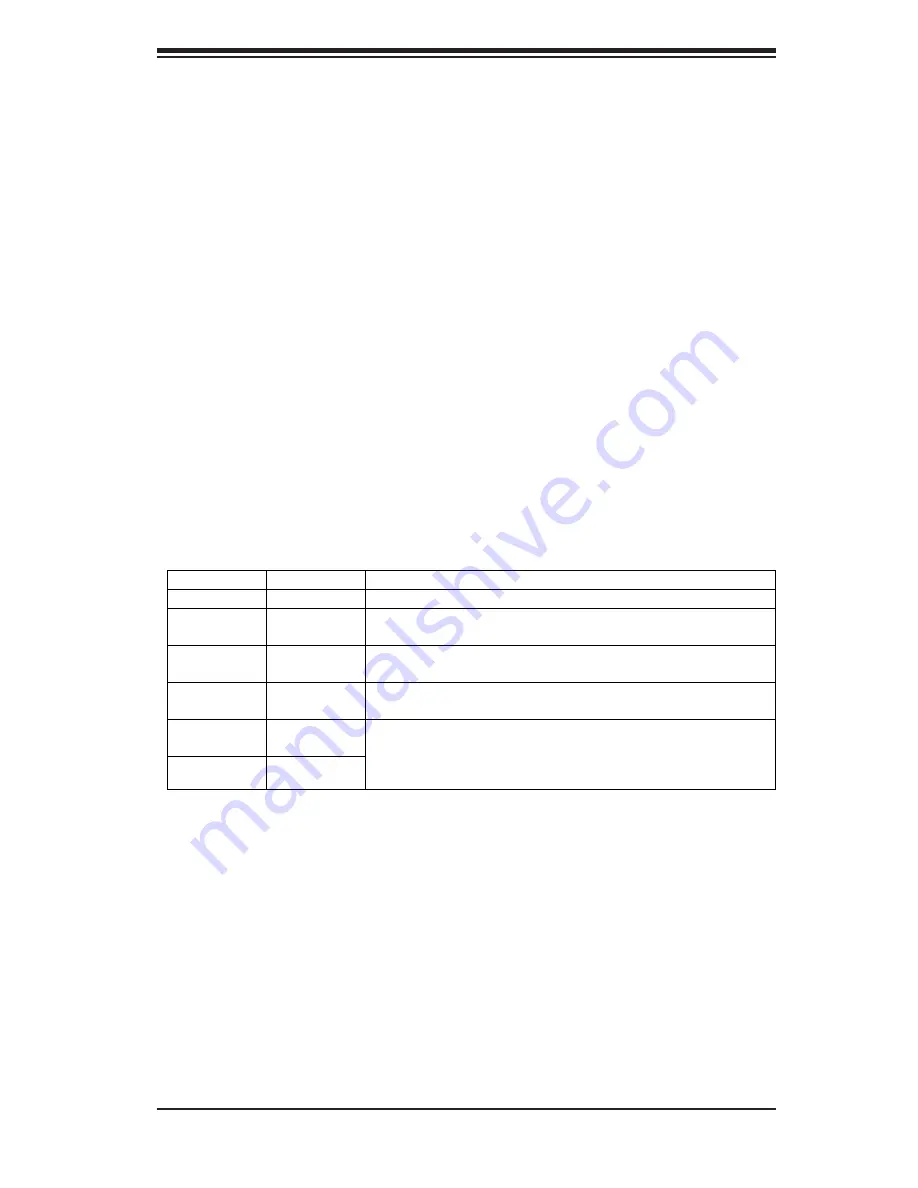
Appendix B: Software Installation
B-19
Assigning Array Properties
Once you've create a new array, you are ready to assign the properties to the array.
Caution:
Once the array is created and its properties are assigned, you cannot
change the array properties using the ACU. You will need to use the Adaptec Stor-
age Manager - Browser Edition. (Refer to Adaptec's User's Guide in the enclosed
CD.)
To assign properties to the new array:
1.
In the Array Properties menu, select an array type and press
Enter
. Note that
only the available array types: RAID 0, and RAID1, are displayed on the screen.
(RAID 0 or RAID 1 requires two drives.)
2.
Under the item "
Arrays Label
",
type in an label and press
Enter
. The label
shall not be more than 15 characters.
3. For RAID 0, select the desired stripe size. Available stripe sizes are 16, 32, and
64 KB-default. It is recommended that you
do not
change the default setting.)
4.
The item:
"Create RAID via"
allows you to select between the different creating
methods for RAID 0 and RAID 1.
The following table gives examples of when each is appropriate.
Note:
If you select Migrate for RAID 0, or Build for RAID 1, you will be asked
to select the source drive. The contents of the source drive will be preserved.
However, the data on the new drive will be lost.
5.
When you are fi nished, press
Done.
Notes:
1. Before adding a new drive to an array, back up any data contained on the new
drive. Otherwise, all data will be lost.
2. If you stop the Build or Clear process on a RAID 1 from ACU, you can restart it
by pressing Ctrl+R.
Raid Level
Create Via
When Appropriate
RAID 0
No Init
Creating a RAID 0 on new drives
RAID 0
Migrate
(*Note)
Creating a RAID 0 from one new drive and
one drive with data you wish to preserve
RAID 1
Build1
Any time you wish to create a RAID 1, but especially if
you have data on one drive that you wish to preserve
RAID 1
Clear
Creating a RAID 1 on new drives, or when you want to
ensure that the array contains no data after creation.
RAID 1
Quick
RAID 1
Init
Fastest way to create a RAID 1.
Appropriate when using new drives
Summary of Contents for SUPERSERVER 6014P-32
Page 1: ...SUPERSERVER 6014P 32 SUPERSERVER 6014P 32R USER S MANUAL 1 0 SUPER...
Page 5: ...v Preface Notes...
Page 10: ...SUPERSERVER 6014P 32 6014P 32R User s Manual x Notes...
Page 25: ...Chapter 2 Server Installation 2 9 Figure 2 5 Accessing the Inside of the System...
Page 30: ...3 4 SUPERSERVER 6014P 32 6014P 32R User s Manual Notes...
Page 56: ...5 22 SUPERSERVER 6014P 32 6014P 32R User s Manual Notes...
Page 92: ...A 6 SUPERSERVER 6014P 32 6014P 32R User s Manual Notes...
Page 126: ...C 4 SUPERSERVER 6014P 32 6014P 32R User s Manual Notes...






























